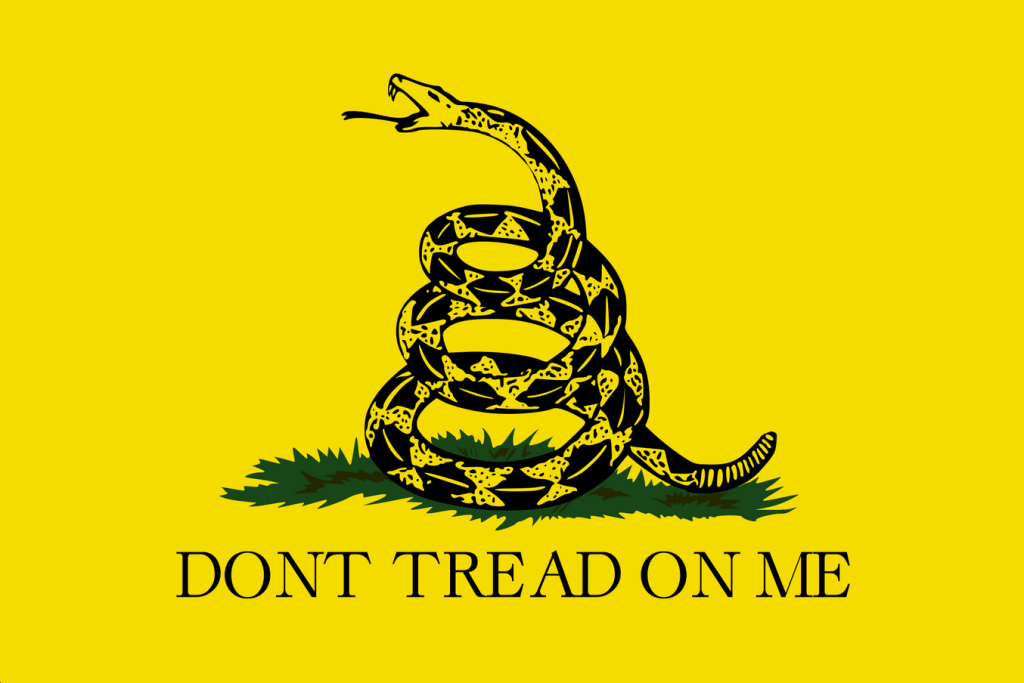We headed up our previous NEWS post entitled “A Brief History of Flags” with an image of a red-and-white-striped flag featuring a rattlesnake and the familiar slogan, “Don’t Tread on Me!” While that slogan, and the symbolic use of the rattle snake, may be familiar to some of our regular readers, especially those interested in American flag history, we thought the history behind that particular symbolic representation in a U.S. flag merited a little more explanation. So, once again down the rabbit hole of history …
The first flag to feature the rattlesnake and the famed phrase “Don;’ Tread On Me” is featured at the top of this post. Featuring a coiled rattlesnake and the motto on a field of yellow, this is known as the Gadsden flag. The flag is named for its designer, Charles Gadsden, who was a general and statesman during the American Revolution. While Gadsden conceived his flag in 1775, the first use of the rattlesnake as representative of the early U.S. colonies is generally attributed to writings of Benjamin Franklin appearing in his Pennsylvania Gazette in 1751. During the French and Indian War a few years later, Franklin would create a now-famous woodcut of a rattlesnake cut into eight pieces (representing the eight American colonies at the time) with the phrase, “Join, or Die.” The woodcut was used to produce the first political cartoon published in American newspapers. Over time, use of the rattlesnake as a symbol of the colonies grew in popularity as the cause of the American revolution grew.
The first military appearance of the rattlesnake with the “Don’t Tread On Me” was on the drums of Marines assigned to accompany the first commissioned Navy vessels in the fall of 1775. The drums were painted below. Then Colonel Gadsden served on the Marine Committee at the Second Continental Congress and was charged with supplying the Marines for their naval mission. He gave Commodore Esek Hopkins, the newly-appointed CIC of the Navy, a flag featuring the coiled rattlesnake and the “Don’t Tread On Me Motto” on a field of yellow to serve as the standard of the commander’s flagship. Gadsden would present a copy of the flag to the Congress of South Carolina in Charleston.
Of course the Gadsden flag would eventually be replaced with the Stars and Stripes, but it remains a fashionable and widely-displayed flag today, often denoting an organization’s or individual’s patriotism, concern with civil liberties or displeasure with real or perceived government encroachments.

